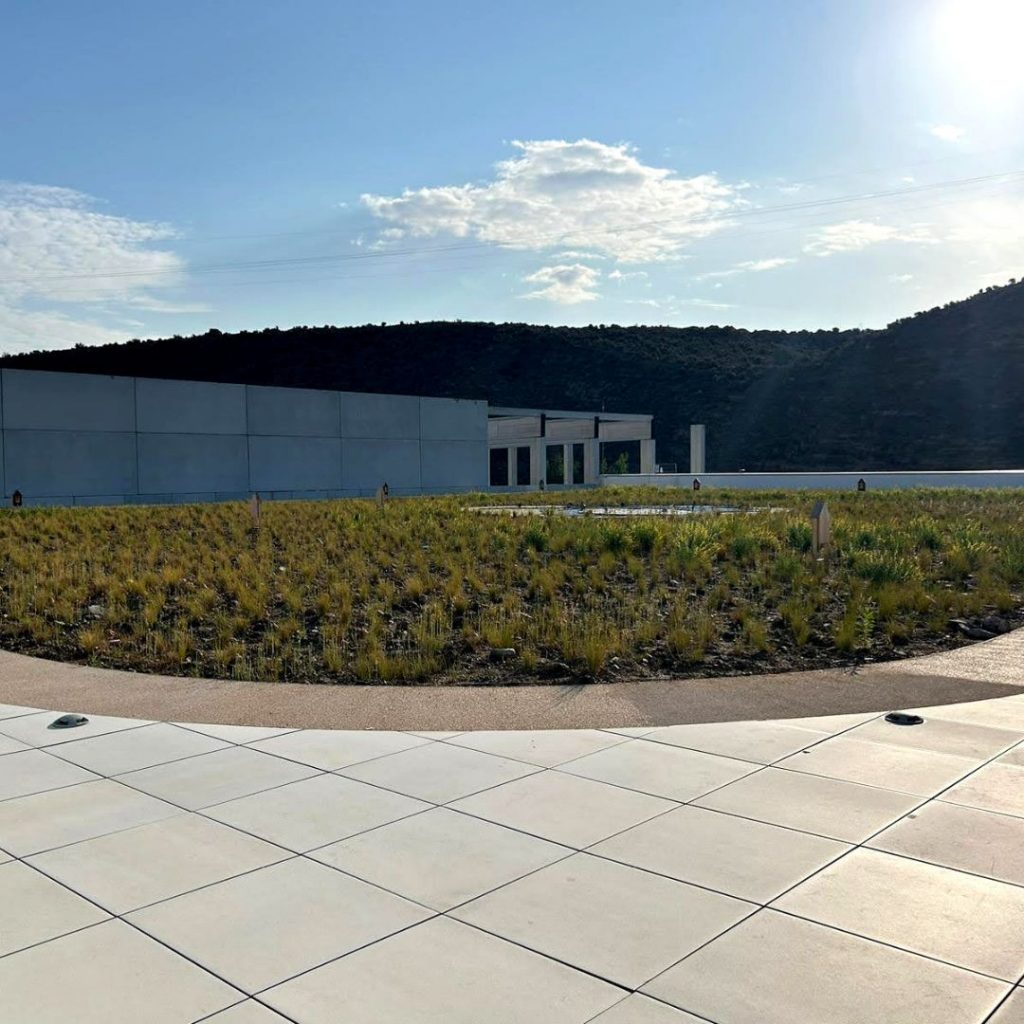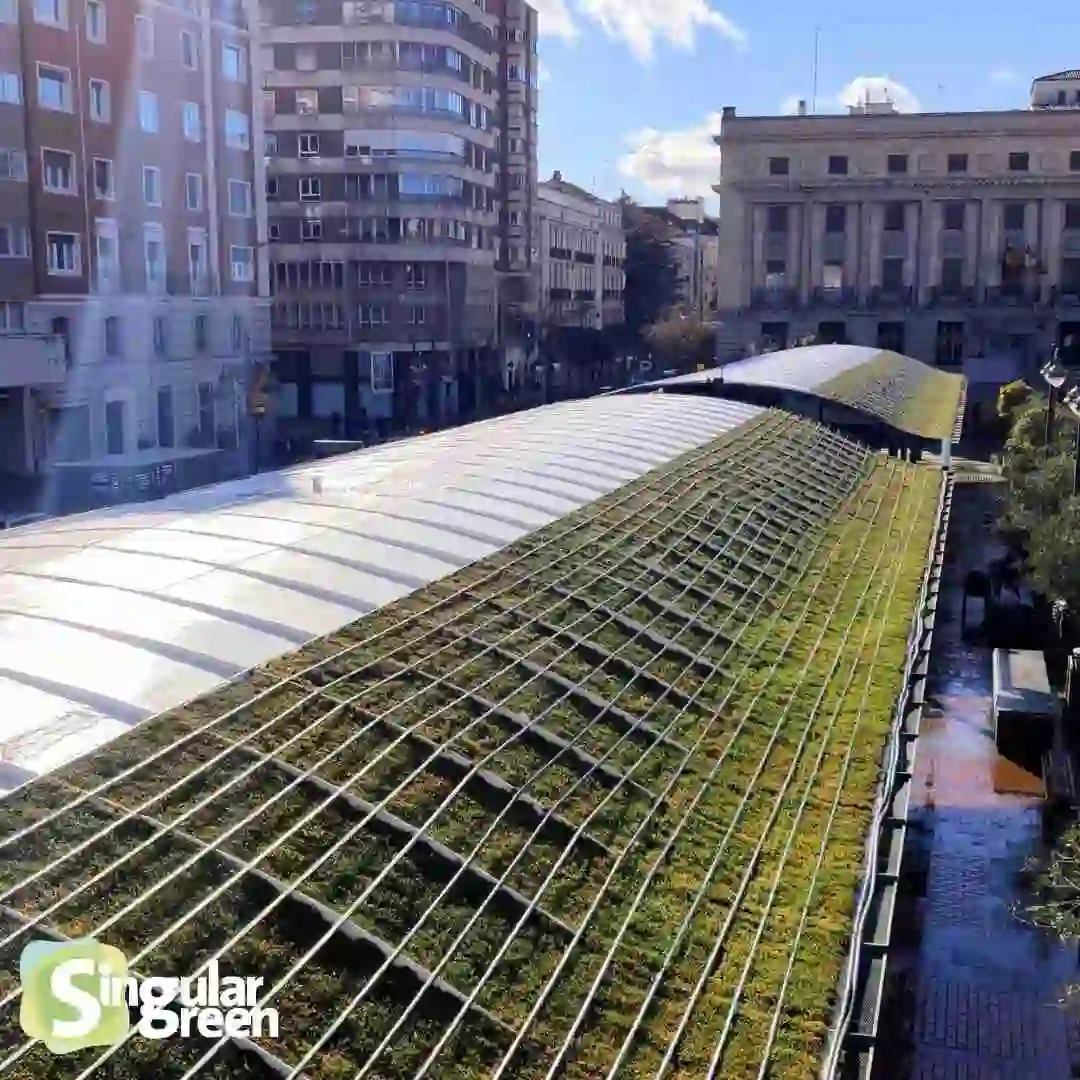After many years of history, green roof innovations are still a hot topic for many reasons. These green structures not only beautify buildings, but also improve energy efficiency, reduce the heat island effect and contribute significantly to urban sustainability.
Evolution of Green Roofs
From the hanging gardens of Babylon to the present day, green roofs have evolved enormously. Today, thanks to technological progress, green roofs have been optimised to offer multiple environmental and economic benefits.

Energy and Economic Benefits
Improved Energy Efficiency
One of the most outstanding aspects of green roofs is their ability to improve energy efficiency.
Plants act as a natural insulator, reducing thermal transmittance compared to conventional roofs.
This results in a lower indoor temperature during summer and higher heat retention in winter, which in turn reduces the need for artificial air conditioning and contributes to significant energy savings.
Reducing the Heat Island Effect
Urban areas often experience the phenomenon known as ‘heat island’, where temperatures are noticeably higher than in surrounding rural areas.
Green roofs help mitigate this effect by cooling the air through the process of evapotranspiration.
This benefit is particularly important in densely populated cities, where extreme heat can affect the health and well-being of inhabitants.
Monetary Savings and Amortisation
From an economic perspective, green roofs represent an investment with a considerable return.
The reduction in air conditioning costs translates into monetary savings that, in many cases, can pay back the initial investment in approximately ten years, much sooner than other nature-based solutions such as vertical gardens.

Environmental Impact and Sustainability
Reduction of CO2 Emissions
In addition to the energy benefits, green roofs contribute to the reduction of CO2 emissions.
Plants absorb carbon dioxide and release oxygen, improving air quality and combating climate change.
This process not only benefits individual buildings, but also has a positive impact on the community and the environment in general.
Optimising Water Use
Green roofs are designed to make the best use of rainwater. By retaining and utilising this water, the need for additional irrigation is reduced and water consumption is optimised.
This feature is particularly valuable in water-scarce areas where every drop counts.
Durability and Maintenance of Groundcovers
Increased Durability of the Waterproofing Membrane
Green roofs also increase the durability of the building’s waterproofing membrane.
On conventional roofs, this membrane can start to show signs of wear in as little as five years.
However, plants protect the membrane from direct exposure to the elements, significantly extending its lifespan.
Health and Wellness
Health and Air Quality Benefits
Green roofs not only benefit the environment, but also have a positive impact on human health.
Urban vegetation contributes to the generation of extra oxygen, traps dust and filters harmful gases, thus improving air quality.
In addition, the presence of green spaces can reduce stress and promote a healthier environment.
Noise Reduction
Another notable benefit is noise reduction. Plants act as natural noise barriers, absorbing and deflecting sound. This is especially useful in noisy urban areas, where peace and quiet can be hard to find.
Case study of green roof innovation
Green roofs are being implemented in a variety of contexts, from residential and commercial buildings to industrial facilities around the world.
Roof system that reuses soil from the ground
As a case study based on green roof innovations we would like to refer to one example, our Cikla System.
It is a system capable of reusing the soil of the land itself, incorporating the benefits of the circular economy.
To be able to do this it is absolutely necessary to carry out a geotechnical study of the soil to determine the viability of the substrate as not everything is valid, but the real secret to the proper functioning of this system lies in also installing a retention layer.
The combination of the substrate with the retention layer ensures that the roofs have adequate drainage capacity to be able

The Future of Groundcover Innovations
The future of green roofs is promising.
With growing concerns about climate change and sustainability, these green solutions are expected to become increasingly popular.
Innovations such as the use of lighter materials, intelligent irrigation systems and new plant species adapted to different climates are expanding the possibilities and applications of green roofs.
We are currently working on a new innovative non-irrigation system that will use the moisture from dew (that’s as far as we can read so far). We look forward to hearing more about it soon.







